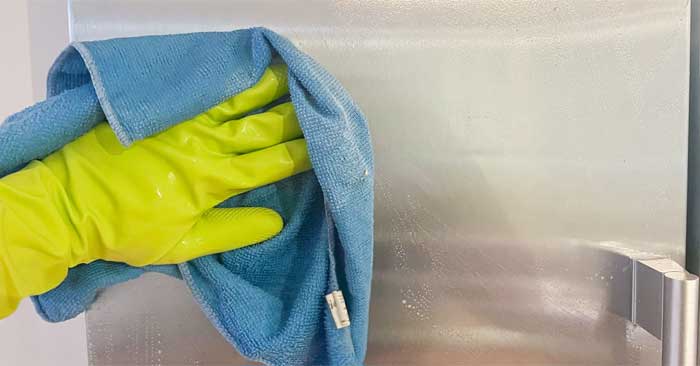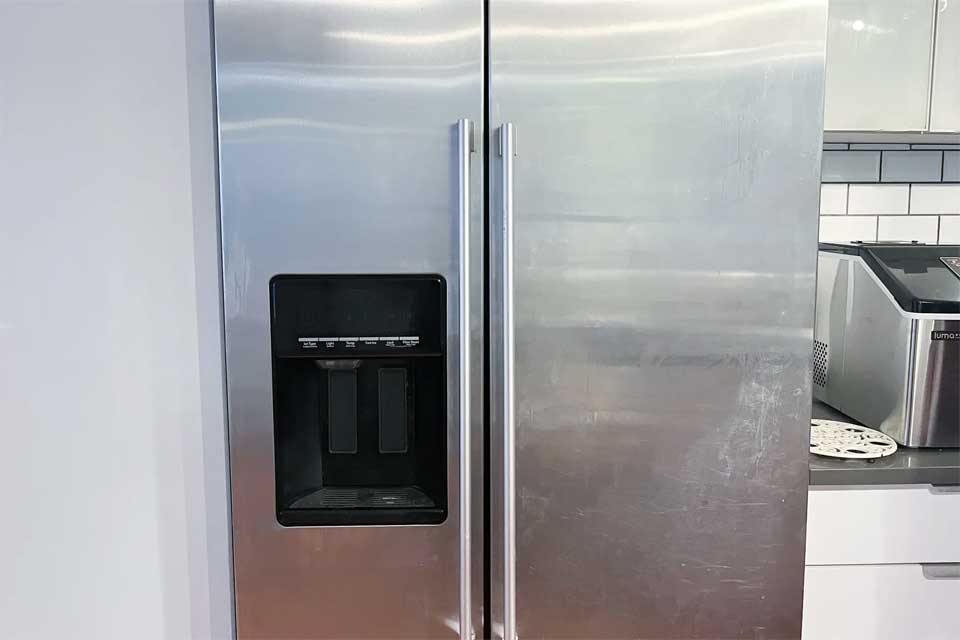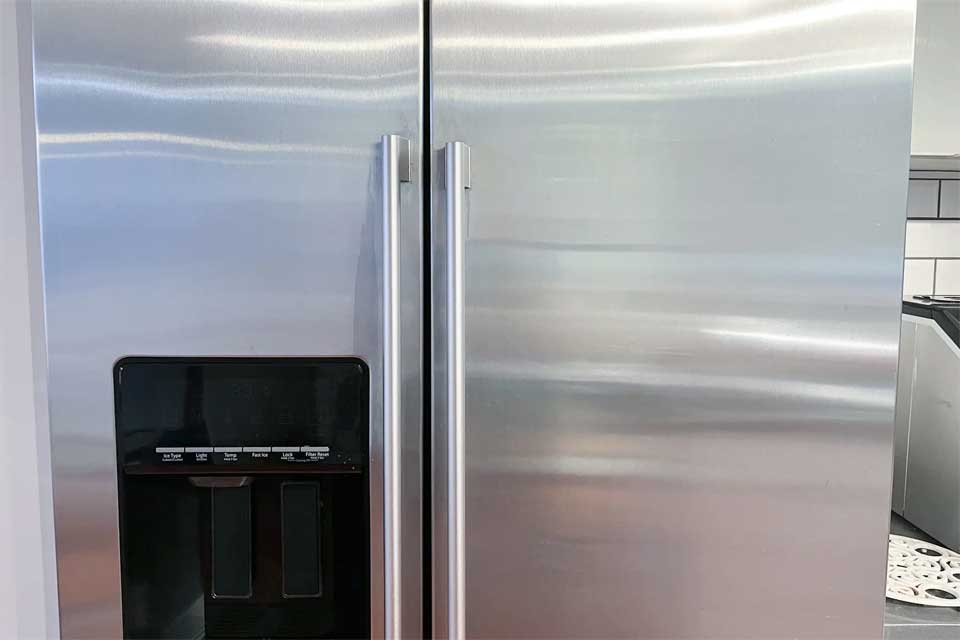How to clean stainless steel appliances
Even stainless steel appliances that have been treated to resist stains should be cleaned periodically to maintain their shiny shine. If you've ever cleaned (or tried to) stainless steel, you've probably had the unpleasant experience of the surface looking dirtier than when you started. That's because not all cleaning products are effective on stainless steel, whether they leave streaks, give off a strong chemical smell — or clean other surfaces perfectly but leave stains on stainless steel.

Here are the most effective methods for cleaning stainless steel appliances recommended by experts.
What you need to prepare
- Rubber gloves help you avoid damaging your tools by leaving extra fingerprints.
- Dishwashing liquid helps cut through grease, making it ideal for cleaning stainless steel.
- A small bowl of warm water — or a nearby sink — will do.
- Three microfiber cloths will not scratch the device when you clean it. You will need two cloths for washing and one cloth for drying.
- Dish sponge has a non-scratch scrubbing side to help clean tough stains.
Depending on the size of the device, it may take anywhere from 10 to 30 minutes to clean.
Before you begin

Check your owner's manual before cleaning for any specific instructions. (If you don't have a hard copy, do a quick online search for your appliance's make and model to find a PDF version.)
Many articles suggest cleaning stainless steel appliances with vinegar, but according to a representative from the American Cleaning Institute, the acidity of vinegar can corrode stainless steel. On the other hand, dish soap — or cleaners specifically designed for stainless steel — will not damage the metal.
If the stainless steel appliance is fingerprint resistant – treated with a special finish that repels smudges – then the same techniques outlined below can also be used.
Surface cleaning
Depending on the appliance you are cleaning, remove any objects that might get in the way (such as magnets or suction cup hangers). Put on rubber gloves. Dampen a microfiber cloth in warm water and wipe the stainless steel until it is damp. Starting with a wet surface will make it easier to work with the dish soap.
Next, dampen another microfiber cloth and add a drop or two of dish soap. Begin wiping the appliance down slowly. You may need to periodically dampen the cloth and add a little more soap depending on the surface area of the appliance and how dirty it is.
Treat stubborn stains
Most stains will be easily removed with a solution of dish soap and a strong cloth. However, some stains can be quite stubborn (especially in the kitchen); for these stains, you should use a gentle sponge with the same mixture of dish soap and warm water. For particularly stubborn stains, you may need to alternate between scrubbing in circular motions and up and down.
Rinse (and rinse again)
Getting all of the soap residue off can be a pain — and a mess. Some people avoid this by making a solution of dish soap and water, but that's really not necessary when cleaning stainless steel. Getting it off completely depends on two things: limiting the amount of dish soap you use and always having a damp, soap-free cloth handy throughout the process.
When wiping away soap residue with a damp, soap-free cloth, be sure to rinse the cloth thoroughly with clean water from time to time to avoid spreading the soap all over the surface. You'll know you're done when there are no more soap suds left — just a wet surface.

Dry the device
Use a third microfiber towel to dry the stainless steel . The easiest way to avoid streaks is to dry the entire appliance by hand rather than letting it air dry. However, if you don't have time to dry the appliance by hand, you can avoid streaks by wiping evenly as you clean.
You should read it
- Should choose between: Aluminum pot and stainless steel pot?
- New 3D printing techniques especially for stainless steel materials
- Top of the best selling stainless steel welding machines today
- Compare Apple Watch aluminum Apple Watch stainless steel case
- Installation instructions for Son Ha water tank
- The standard and safest Tig welding technique
 How to fix a leaky two-handle faucet
How to fix a leaky two-handle faucet Questions That Can Reveal the Truth About Your Aging Process
Questions That Can Reveal the Truth About Your Aging Process Why should you turn off the air conditioner during a storm?
Why should you turn off the air conditioner during a storm? How to get into the house when the electronic lock is broken?
How to get into the house when the electronic lock is broken? The Best Way to Organize Socks and Underwear Neatly, According to Experts
The Best Way to Organize Socks and Underwear Neatly, According to Experts The biggest mistakes when growing tomatoes that everyone should know
The biggest mistakes when growing tomatoes that everyone should know